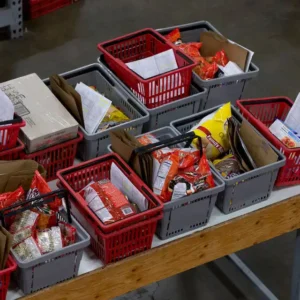How to send Money to Federal inmate
Sending money to a federal inmate can seem challenging, but it’s a straightforward process once you understand the steps involved.
Whether you’re sending money to a loved one or helping a friend, this guide will walk you through the entire process in simple terms. By the end, you’ll be well-equipped to handle this task confidently.
Let’s dive in,
Reasons why you should send money
Federal inmates often need money for various reasons. They can use it to buy items from the commissary, pay for phone calls, or cover other expenses. Supporting an inmate financially can significantly improve their quality of life while they are incarcerated.

Methods to Send Money
There are several methods to send money to federal inmates, including online transfers, money orders, and in-person deposits. Each method has its own steps and requirements, so it’s essential to choose the one that best fits your situation.
1. Online Transfers
Online transfers are the quickest and most convenient way to send money to a federal inmate. The Federal Bureau of Prisons (BOP) has partnered with MoneyGram and Western Union to facilitate these transfers.
Steps to Send Money via MoneyGram:
1. Locate a MoneyGram Agent: You can find MoneyGram locations at various retailers, post offices, and banks. You can also send money online through the MoneyGram website or app.
2. Complete the Blue MoneyGram ExpressPayment Form: When using a physical location, fill out the form with the following details:
– Receive Code: 7932
– Account Number: Inmate’s eight-digit register number followed by the inmate’s last name (no spaces).
3. Make the Payment: Pay the transfer amount plus any fees. You can use cash, a debit card, or a credit card.
4. Keep the Receipt: This contains the reference number, which can be used to track the transfer.
Steps to Send Money via Western Union:
1. Visit a Western Union Location or Go Online. You can find Western Union services at many retail locations, or you can use their website or app.
2. Fill Out the Form or Online Fields and Provide the following information:
– Pay To: Federal Bureau of Prisons
– City Code: FBOP
– State Code: DC
– Inmate’s Register Number and Last Name: As the account number (no spaces).
3. Submit the Payment: Pay the amount you wish to send plus any applicable fees.
4. Save the Receipt: For tracking purposes.
2. Postal Money Orders
If you prefer not to use online services, you can send a money order via postal mail.
Steps to Send a Money Order:
1. Get a money order from the post office, bank, or another provider.
2. Include the inmate’s full name and eight-digit register number on the money order.
3. You will need to fill out a deposit slip available on the BOP’s website. Include your name, address, and the inmate’s details.
4. Send both items to the BOP’s centralized processing location at:
Federal Bureau of Prisons
Inmate Name
Inmate Register Number
Post Office Box 474701
Des Moines, Iowa 50947-0001
5. Money orders typically take a few days to process once received.
3. In-Person Deposits
Some facilities allow in-person deposits, although this is less common. Check with the specific facility to see if this option is available.
Important Tips and Considerations
1. Double-Check Information
Always double-check the inmate’s register number and other details before sending money. Incorrect information can lead to delays or the money being sent to the wrong person.
2. Be Aware of Fees
Both MoneyGram and Western Union charge fees for their services. These fees vary depending on the amount sent and the method of payment. Always factor in these costs when planning your transfer.
3. Understand Processing Times
Processing times can vary. Online transfers are usually processed within a few hours, while money orders can take several days. Plan accordingly, especially if the inmate needs the funds by a specific date.
4. Use Trusted Services
Only use trusted services like MoneyGram and Western Union. Avoid third-party services that promise faster transfers but may not be reliable.
5. Monitor Your Transfers
Keep records of all transactions. This includes receipts, reference numbers, and any correspondence with the service providers. This can help resolve any issues that may arise.
Frequently Asked Questions
1. How much money can I send to a federal inmate?
There is no set limit on the amount you can send to a federal inmate, but large deposits might be flagged for review. It’s best to check with the specific facility for any additional restrictions.
2. Can I send money internationally?
Yes, you can send money internationally using services like MoneyGram and Western Union. However, be aware of the additional fees and potential delays involved in international transfers.
4. What happens if I send money to the wrong inmate?
If you send money to the wrong inmate, it can be challenging to recover. Always double-check the inmate’s details before completing the transaction. If an error occurs, contact the service provider immediately for assistance.
5. How can the inmate use the money?
Inmates can use the money to purchase items from the commissary, such as snacks, toiletries, and personal items. They can also use it to make phone calls and pay for other services provided by the prison.
6. Can I set up recurring payments?
Some services, like Western Union, allow you to set up recurring payments. This can be convenient if you plan to send money regularly. Check with the service provider for details on how to set this up.
Conclusion
Sending money to a federal inmate is a straightforward process once you understand the steps involved. Whether you choose to use online transfers, postal money orders, or in-person deposits, following the guidelines provided in this guide will ensure that your money reaches the intended recipient safely and efficiently. Always double-check the inmate’s details, be aware of the fees, and keep records of all transactions to avoid any issues.





